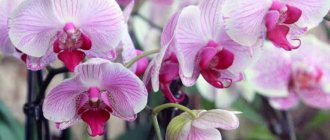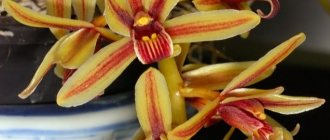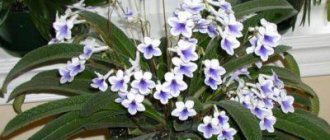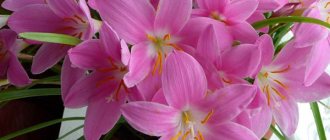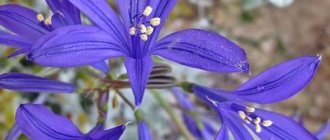Lilies, captivating with their amazing aroma, are not inferior in elegance and beauty to the rose, which is called the queen of gardens. The flower, which grows from a bulb, like tulips and hyacinths, unites numerous species and varieties into a family; it is found naturally in western China, Burma, southern Tibet, and grows naturally in North America. For a long time, Russian flower growers and hobbyists did not dare to grow lilies, considering this ornamental crop too demanding. Hybrid varieties, created by breeders from different countries, are accepted in unfavorable conditions, delight with an abundance of shades, and captivate with their sophisticated and refined appearance.
What colors are there?
Depending on the variety, the height of the ornamental crop ranges from 50 cm to 2 meters. On the long stem of lilies there are narrow lanceolate leaves, at the top buds are formed in the form of:
- bell;
- calyxes;
- funnels;
- tubes;
- stars;
- turbans.
The variety of colors and shades of the petals, forming graceful corollas, amazes. In addition to white, yellow, pink, crimson, lilac, black, purple, and apricot lilies, there are varieties with specks that are scattered throughout the flower, in some places, and differ in shape, size, and color.
Classification
When crossing wild lilies that are found in the foothills, in forest clearings, on slopes covered with grass, more than 2 thousand hybrids of a perennial crop appeared, which caused confusion among breeders when classifying a flower as a lily species, causing difficulties in choosing varieties for cultivation among amateurs and gardeners.
Jan de Graaf, who himself was engaged in breeding flowers, decided to divide the decorative culture into groups. The classification of lilies, created by an American breeder, in which plants are grouped based on origin, was accepted as international in 1964 and is used now, but clarifications and additions have been made. Lilies that are included in the same group require the same or similar conditions for breeding.
The classification consists of 9 sections, which include varieties and types of lilies, which are combined into 8 groups among them:
- American;
- tubular;
- long-flowered;
- eastern;
- Asian;
- curly;
- snow-white.
The ninth section of the international qualification is devoted to wild lilies that are found in natural conditions and cultivated ones that are used in gardening and landscape design.
Group 8, called interspecific hybrids, includes representatives of the Liliaceae family that were not included in the previous sections, which differ in smell, different number of flowers, and variety of shades.
general characteristics
Lily - (lat. Lilium) belongs to the monocotyledonous class, the genus Lily and the Liliaceae family. This is a perennial flowering plant. From the ancient Celtic language the name of the flower is translated as “whiteness”. Indeed, since ancient times, the lily has been considered a symbol of purity, purity and beauty.
We can see images of the flower in paintings, frescoes, and dishes preserved from the times of Rome, Persia, Ancient Egypt and Greece.
Nowadays, these divine flowers decorate any flower garden and bring an extraordinary romantic mood. During flowering, the aroma and bright colors put the lily on the same level as the rose.
Botanical description
- The stem of the plant continues the bottom of the bulb, dense in structure, with many dark green leaves, simple or slightly branched towards the top.
- In almost all species the leaves are arranged in a spiral; in some they grow in a circle. A bud always forms on the last corner leaf, which begins to develop and grow, and a year later it blooms.
- If the sowing of a lily is carried out by planting seeds, then the seed turns into a bulb gradually, and within 3 - 7 years it actively develops, and only then begins to produce flowers.
- In some varieties, buds in the form of scaly leaves form near the leaves, on the aerial stem. They give roots and then fall off. Once on the soil, they take root and begin to develop as an independent plant.
- The lily flower is a bell-like perianth of 6 unrelated leaves: 3 outside and 3 inside the cup. The upper ends of the petals bend slightly to the sides. There are slits at the base that release sap, which produces an aroma and attracts insects for pollination.
- The anthers of the lily are attached from the backs and are, as it were, in free space, so they sway.
- The ovary turns into an elongated column, which ends in a kind of stigma, which can be called three-lobed.
- There are many ovules in the fruit, and then there are also seeds.
There are more than 100 types of lilies. They are mainly distributed in Central Asia and Europe. In Russia there are no more than 16. And there are more than 10,000 varieties themselves. Oriental and long-flowered varieties have the aroma.
Varieties are presented in the following categories:
- Asian.
- Curly.
- Snow-white.
- American.
- White-flowered.
- Tubular.
- Eastern.
The most popular and widespread are Asian hybrids, as they are quite unpretentious in care and tolerate cold well. The most famous varieties:
- Delta.
- Tinos.
- Yellow.
- Loretto.
- Marlene.
The name Bush Lilies itself comes from the ability of this plant to grow several stems into one. The result is a whole ball of inflorescences on one stem.
In some varieties, daughter bulbs are produced from the mother bulb, and the bush is formed through the so-called bulbous nest. Although the name “Bush” is more popular than scientific.
The shape of these varieties resembles a bowl or turban and has virtually no aroma. The colors of lilies are very different: all shades of pink, pure white, purple, orange, yellow. There are also terry varieties.
Cultivated species
Lily varieties created by breeders fill gardens and parks with aroma, are used to decorate floral arrangements, and decorate country and suburban areas.
Asian
One of the most numerous groups of ornamental crops includes lilies, which are characterized by resistance to fungal diseases and take root in climates where winter temperatures drop to -30°. Among Asian hybrids there are varieties both 50 cm tall and taller than one and a half meters. The flowers in this group love sunny areas, grow well on neutral fertile soils, on soils with low acidity, bloom profusely in one place for 4 years, open buds at the end of June.
The bowl-shaped corollas surprise with their variety of colors; there are varieties with black and tricolor petals. In funnel-shaped lilies, bell-shaped flowers are directed to the sides, in cuboid lilies - upward.
Hybrids resulting from crossing Asian species of bulbous perennials do not require special care and are easily propagated. Represent a group of lily varieties:
- Sphinx with double flowers of a rich red hue;
- Fata Morgana with bright yellow corollas with a diameter of 16 cm;
- Brushmark with contrasting spots on the petals, reminiscent of a brush stroke.
- Santander with graceful snow-white flowers.
Asiatic lilies react negatively to the addition of excess organic matter and die when moisture stagnates. The disadvantage of garden flowers combined in a group is considered to be the lack of smell.
View this post on Instagram
Publication from Olga (@schelkanovao77)
Martagon
Curly hybrids obtained from 5 species of lilies, which are common in Europe, are found in the north and east of Asia, where they create picturesque massifs and are distinguished by their high growth. The varieties that are presented in the group called Martagon attract attention with elegant pyramidal-shaped inflorescences, consisting of 30 or even 50 small corollas with upward-curved petals, creating the effect of a floating cloud.
On the early varieties of curly lilies, the buds, painted in scarlet, orange, peach shades, and pure white, bloom at the end of June, captivating with a delicate aroma in which cold notes are felt.
Among the Martagon hybrids, gardeners choose for growing:
- Terrace City with wax petals forming a golden turban;
- Claude Schride with many wine-colored flowers and bright orange anthers;
- Arabian Knight with burgundy and chocolate buds.
Curly small lilies tolerate 25-degree frosts and grow not only in the sun, but also in the shade. When moisture stagnates, martagons are affected by fusarium.
Candidum
They require shelter for the winter, are demanding in terms of care, soil and lighting, varieties of white lilies with inflorescences in the shape of a cone or pyramid, crowned with a brush. The tubular corollas of candidum, blooming 30 pieces on one stem, are distinguished by the correct symmetry of the lines, which seems to be emphasized by golden anthers.
Snow-white flowers, reaching a length and diameter of 12 cm, envelop even remote corners of the garden with a fragrant aroma and amaze with their sophisticated appearance in reality and in the photo. Candidum is used to decorate recreation areas, create ceremonial compositions, and romantic ensembles.
A representative of the group called Apollo grows up to 1.2 m in height; black dots stand out in the middle of the tubular flowers, which bloom in June and reach a diameter of 12 cm.
American
Hybrids, whose ancestors grew wild in the prairies on grassy slopes and the edges of deciduous forests of North America, are demanding of care, require shelter for the winter, regular irrigation, and love shaded areas. The stem of these lilies reaches a height of 2 m. The tubular flowers or bells of American hybrids amaze with a variety of shades; in many varieties, the entire petal is dotted with large specks or painted in 2 colors. The brightest representative of the group, called Afterglow, is distinguished by its 2-meter height, crimson corollas, on the petals of which there are dark spots, which are clearly visible even in the photo.
Long-flowered
Hybrid forms that come from lilies that are naturally found in the tropical climate of the Japanese Islands, in temperate latitudes, take root only in greenhouses, are grown in pots, are not adapted to the cold, and reproduce only vegetatively. The corollas of long-flowered lilies, whose stem height rarely exceeds 1 m, enchant with their graceful form, snow-white color, delicate aroma that fills the space, and look great in bouquets
The variety called White Haven, which, like many representatives of the group, blooms twice a year - in June and autumn, the middle of the snow-white corolla is green, the buds droop, the petals curl slightly.
Tubular and Orleans
Yellow, pink, orange, cream lilies with elongated and cuboid-shaped flowers, the inside of which is lighter than the outside, were obtained by breeders by crossing different types of perennials with tubular inflorescences. Plants overwinter normally in cold climates, are resistant to viruses and fungal diseases, but are afraid of spring frosts.
One bulb of Orleans hybrids produces 2 stems with racemose inflorescences up to 18 cm long. A variety called African Queen, growing up to 140 cm in height, attracts gardeners with its rich aroma, bright apricot hue, and petals decorated with brown strokes.
Interspecific hybrids
Lilies that were not included in the previous 7 groups are combined in section 8. The first letters in the name of hybrids, which are bulbous plants with original and very beautiful flowers, indicate the species from which they originated - long-flowered, oriental, Asian.
Many varieties of lilies, classified in a group called interspecific hybrids, bloom twice a year, grow in temperate latitudes without shelter, exhibit increased frost resistance, and do not require special care.
La hybrids
Plant forms obtained by complex crossing of Asian and long-flowered varieties, with the correct choice of variety, are accepted and bloom in central Russia. La hybrids, which were first presented at the exhibition in 1990, do not require shelter in frosty winters, are unpretentious in care, and are similar in biological characteristics to Asian varieties.
Terry lilies with large flowers with a diameter of 18 to 25 cm, directed upwards or to the sides and consisting of dense petals, are used for cutting and forcing, and are planted in pots.
La hybrids emit a light and pleasant aroma, have a variety of colors from white and pink to combined, varieties with specks have been bred, changing color with age.
OT hybrids
By crossing oriental and tubular plant species, breeders managed to create a large number of varieties with large flowers and strong shoots up to 180 cm high.
On one stem, OT hybrids form up to 30 buds of various colors, which, when blooming, spread an aroma reminiscent of the smell of trumpet lilies, but more delicate. Flowers are grown in the garden, placed next to fruit trees, and used for cutting.
Lo hybrids
By triple crossing capricious long-flowered species that do not take root well in open ground, and oriental hybrid forms adapted for cultivation in temperate climates, a group of varieties called Lo hybrids was created. Flowers up to 150 cm high have powerful shoots, on which long leaves with a glossy shine are densely located.
Lo hybrids differ in the color of the buds and the shape of the flower, but they also have common features:
- do not tolerate stagnation of moisture;
- does not require transplantation until 7 years of age;
- grow in sun and partial shade.
The characteristics of the variety are influenced by which type of lily was dominant during the crossing. Plants are grown in different regions of Russia, but in Siberia and the Urals, where the summer is short, the flowers bloom no earlier than July. When there is a sharp cold snap, lilies become infected with a fungal infection; in severe frosts in winter they often freeze even under cover.
OA hybrids
They feel comfortable in mid-latitudes, reproduce easily, and practically do not get sick from plants that have adopted unpretentiousness and resistance to frost from Asian species; they have borrowed the graceful flower shape and velvet petals from the Eastern species. OA hybrids have appeared recently and are not yet pleasing with the number of varieties and variety of shades; they are mainly presented in orange, yellow, and pink. The flowers are not as large as the oriental varieties that took part in complex crossings, but they last a long time when cut.
The best varieties combined into OA hybrids include Kavery, which attracts attention because the elegant petals that form a large flower have a crimson color that first turns orange and acquires an amber tint at the tips.
Blue varieties
Often, online stores selling flowers offer customers to familiarize themselves with a catalog where varieties of lilies are presented with photos and names. In addition to plants with inflorescences of yellow, burgundy, purple, pink or lilac colors, there are also original, but still not bred, blue lilies. Japanese breeders are working on the creation of such flower varieties, which they promise to show their creation to the world in the near future.
Craftsmen from stores process photographs in programs to obtain a blue tint, offering customers blue lilies that do not exist in nature, were not created by breeders, but look amazing in the photo.
Tiger varieties of lilies
Although orange, white, red, and lilies are grown more often in summer cottages and suburban areas than other varieties of decorative perennials, tiger varieties with drooping flowers about 10 cm in diameter, consisting of speckled fiery red or yellow petals, are becoming popular among gardeners.
Hybrid forms up to 1.2 m high called Tigrinum, obtained by crossing the tiger lily with other members of the family, form double flowers of a pastel shade, which bloom in the second half of summer. Heat-loving varieties with original colors in the middle zone need shelter for the winter and are often grown in pots.
Wild varieties of lilies
Species-specific bulbous perennials appeared without the participation of breeders, were created by nature and grow in forests, swampy areas, on mountain slopes, in dachas and gardens and take root when similar conditions are created.
The wild variety, named after the writer O Henry, grows up to 2 m and forms inflorescences consisting of 2 dozen buds. Light green stripes will stand out on the yellow and orange petals.
The curly lily is distinguished by its turban-shaped pink-lilac corollas, dotted with dark specks.
By mid-June, an erect, densely leafy perennial called Daurian lily blooms on the slopes of hills, tall grass meadows and forest edges. Flowers, up to 10 cm in diameter, are formed by bent red, orange, yellow petals with small spots, collected in inflorescences of 3–5 pieces.
Tree lily plants
By crossing tubular and oriental species of perennial, Canadian breeders created a plant of striking beauty and elegance, reaching a height of 2.5 m. The shoots of the lily tree reveal many fragrant pink corollas with a diameter of 30 cm, consisting of tubular or turban-shaped petals.
Possible diseases and pests, ways to get rid of them
The danger for indoor lilies is excessive waterlogging. It can create comfortable conditions for the development of root rot. This fungal disease often affects indoor lilies.
Signs of root rot:
- yellowing of leaves;
- lethargy;
- growth slowdown;
- spots form on the tips of the leaves.
Root rot prevents the growth of green mass and bud formation. Upon careful examination of the bulb, you can see the affected areas covered with spots of mold.
Treatment includes pruning leaves that are affected by rot, as well as completely treating the flower with copper-containing products. The best option would be to choose drugs such as copper sulfate, Fundazol or Topsin-M.
Red burn or stagonospora affects eucharis where temperature fluctuations often occur. The plant gets a red burn when it is overcooled or overwatered.
Signs of a red burn:
- the appearance of red spots on the leaves and buds;
- wilting of leaves and peduncles;
- curvature of buds.
The result of the disease is rotting of the bulbs and death of the plant. Timely detection of the disease allows you to cure the plant and bring it back to life. The bulb is freed from the soil, the damaged areas are inspected, and the damaged areas are cut off until healthy tissue appears.
The affected areas are treated with brilliant green or crushed activated carbon. Rotten bulbs are left on a napkin until dry for 2-3 days. Then a new substrate is selected and the planting material is replanted. To prevent the development of red burn, it is necessary to follow the rules of care, as well as treat planting material with targeted fungicides.
House lilies with wide leaves are rarely infested by pests, but if the rules of care are not followed, the following parasites may appear on the flower:
- Spider mite. Insects appear on indoor lilies when the air is dry and at high temperatures. The appearance of a spider mite can be detected by the presence of a thin cobweb on the inside of the leaf blades. The leaves must be treated with a solution of laundry soap. In case of massive damage, the plant is treated with acaricidal preparations.
- Sciarides or fungus gnats. Constant waterlogging of the soil provokes the appearance of black midges. Mosquitoes lay eggs on the bulbs, the emerging larvae feed on the juice and tissues of the bulbs, leading to complete oppression of the plant. The flower against fungus gnats is additionally treated with a solution of laundry soap or chemicals.
- Scaleworms. These are pests that develop on bulb scales. Their activity leads to curvature of leaves and peduncles and negatively affects sap flow. Scale insects are destroyed with insecticides. Treatment of soil and plants against scale insects should be done regularly.
Description of the best varieties and their shades
Looking through photos of lilies, captivating with their graceful large flowers, it is difficult to determine which of them are the most beautiful, and people have different tastes. Some people like varieties with tall stems and rare purple, chocolate, lilac flowers, others are attracted to white lilies, which look exquisite in a bouquet.
The Lionheart, which is an Asian species, is recognized by its purple color, which appears black at the base and turns yellow at the tips of the petals. The peduncle, growing up to 80 cm, consists of 8 or 10 corollas that bloom gradually.
Marlene is no less beautiful than her name. On an elegant stem that grows up to a meter in height, in the first half of summer, delicate flowers open, consisting of beige petals with rich pink edges.
The Magic Star, which is considered one of the best varieties of lilies representing the eastern group, is distinguished by:
- the original structure of the flower;
- lush buds consisting of wavy petals;
- combination of pink and white colors;
- presence of dark spots.
The lily, to which Canadian breeders gave the name Northern Carillon, forms up to 20 flowers with a diameter of 30 cm on one stem. The tips of the pastel pink petals are bent like bells.
Shocking, which is used for cutting and for decorating flower beds and compositions, pleases not only with a large number of pale yellow flowers with a red center, but also with dense foliage.
A variety called Indian Diamond, growing up to one and a half meters in height, forms an orange inflorescence at the top of the stem, consisting of 7–9 buds, which, when cut, produces an elegant bouquet.
When studying before purchasing bulbs for planting lily varieties, photos and names of which are presented in the store catalogue, summer residents and gardeners often choose:
Barbados with large flowers forming pink petals decorated with a white border;
Casablanca with elegant buds, turning into snow-white corollas, forming a luxurious inflorescence;
Cab Dazzle with a rich yellow color and small inclusions at the base.
Dwarf lilies, which are often grown in containers and pots, are planted in the foreground of flower beds, placed in groups in tubs, and bloom profusely indoors in winter. Lily Mona Lisa, which is considered one of the most attractive low-growing varieties, surprises with the size of fragrant flowers, reaching a diameter of 20 cm; the soft pink petals of which they are composed are decorated with a white border and dotted with crimson specks.
Black
The name slightly exaggerates the darkness of the color. The colors of the black lily, indeed, cover the dark tones of various flowers, but a truly black variety has not yet been bred.
Large funnels and bells reach 30 cm in diameter and have petals that are slightly bent at the top. The color can be dark burgundy, lilac, dark purple, brown.
Among the particularly popular are the following varieties:
Black Beauty - turban-shaped flowers with impressively long stamens, inclined downward. They have a dark cherry color with a lilac tint. A white border stretches along the edge of the petals. The average height is up to 1 meter. The variety is unusually stable and odorless , for which it is valued by many gardeners.
Black Beauty
Landini is a dark burgundy lily with upward-pointing flowers and recurved petals. On a cloudy day it may appear almost black, but in the sun a red tint appears clearly on the petals. It can reach a height of 1.3 meters, with up to 7 flowers in an inflorescence. Blooms towards mid-summer.
Landini
Black Jack is an Asian hybrid with large (up to 15 cm in diameter) dark burgundy flowers. Towards the center they turn into a bluish-dark shade. The flowers are glossy, grow sideways, and bloom at the end of June.
Black Jack
Truths and myths about modern hybrid varieties
By the beginning of the 21st century, there were 110 species of lilies, 10 thousand varieties, but breeders continue to work on creating new forms. The flowers of garden plants come in a variety of shades, but the blue and dark blue lilies that are offered to customers at the market or in a store do not actually exist. There are no columnar or pyramidal hybrids, and varieties of lines that have changed the shape of flowers as a result of mutation are passed off as spherical varieties.
Medicinal herbs that are found in nature relieve inflammation, eliminate pain, accelerate wound healing; varietal lilies and hybrid forms are ornamental crops and do not provide a therapeutic effect; they are not used in medicine.
Poisonous or not
Many are familiar with this flower and prefer to keep it at home. He is in great demand. Some people grow it on a windowsill or in a garden plot, while others enjoy its appearance in its natural habitats. As a result of this popularity, many people wonder whether cyclamens are poisonous or not.
Experienced gardeners consider this flower not only beautiful, but also amazing, combining poisonous and medicinal properties. Products containing this plant are successfully used to combat many diseases.
Since the root of cyclamen contains a glycoside, the plant is poisonous and should be used for medicinal purposes only under strict medical supervision.
Note! It is strictly forbidden to use the flower yourself for treatment, since even low dosages with an unprofessional approach can lead to negative consequences
Briefly about the history of appearance
The variety was first discovered on snow-capped peaks in Israel. In England, the plant began to be grown in pots in the mid-19th century, despite the fact that it was considered wild. In 1650, the plant came to Europe and from that moment began to be in demand, which is still rapidly progressing. Today you can find different colors. They can be one-color, two-color, with a border, a multi-color frill, and this is not the limit. Breeders are constantly working to develop new varieties and shades.
How do Asian hybrids differ from oriental ones?
Although in the photo it is easy to find similarities in the appearance of lilies representing different groups, exquisite orientals differ from Asian varieties in both color and flowering period, are more often susceptible to disease, and are capricious in care.
Fragrant oriental lilies bloom in mid-August, while Asian lilies open their buds at the end of June. The color of large graceful flowers, by which Orientals are recognized, is represented by pink and crimson shades; yellow is rare. Wide petals end in wavy edges.
The smaller, odorless flowers of Asian varieties are distinguished by their bright colors, orange, red, and yellow shades predominate, but white and pink petals are not uncommon, which are not as large as those of the oriental varieties.
Peculiarities
Growing indoor lilies involves taking into account nuances. The main advantage of choosing an indoor lily is its decorative properties.
In addition, there are several advantages associated with the quality characteristics of the flower:
- undemanding conditions of care;
- magnificent appearance throughout the growing season;
- presence of a persistent pleasant odor;
- the presence of lush green mass;
- air ozonation;
- creating a special indoor microclimate;
- destruction of some small insects.
The following features are considered to be the disadvantages of growing:
- Amazon lily is a poisonous alkaloid, it can cause minor harm to the skin with prolonged contact, therefore all procedures associated with transplanting and processing the plant are recommended to be carried out with rubber gloves;
- Eucharis should not be placed next to plants that will compete with it, since the indoor lily can suppress the energy of even the most powerful plant.
Even a novice gardener can cope with growing indoor lilies. The plant does not show any special care requirements. When creating comfortable conditions, it can delight owners with luxurious wide dark green leaves and magnificent buds of different shades.
Accounting for climate zone
Long-flowered varieties, which were created by breeders by crossing lilies growing on tropical islands, take root in greenhouse conditions in mid-latitudes. Representatives of the Candidum group, American and Orleans hybrids are characterized by low winter hardiness.
What varieties of lilies are suitable for the middle zone
Asian species of plants do not freeze when the temperature drops to -35°, are rarely affected by fungal diseases, are represented by many varieties, and after planting do not require special care. In the Moscow region, in Siberia, these lilies are grown in open ground.
Interspecific hybrids overwinter in the middle zone, but in regions with severe frosts, flowers growing in the garden need shelter.
Albizia Lankaran Pampadur
It grows under natural conditions only in the southern regions of Russia. Different varieties of the plant are found in India, China, Taiwan, Japan, southeast Azerbaijan and other places.
Blooming Albizia Lankaran
Although there are rare cases of acclimatization of albizia in central Russia, it is still better to use greenhouses for its cultivation in these regions. Flowering period - late May-early June.
Origin and appearance
In Europe, this plant has been known since the 18th century. Its name consists of two parts. The first part, “albizia,” is named after the Florentine Filippo del Albizzi, who brought the plant to Europe in 1740. In Latin the plant is called "Albizia julibrissin", "julibrissin" is translated from Farsi as silk flower. Therefore, albizia is also called silk. It is also called silk acacia.
The deciduous tree belongs to the Legume family. Its height can reach 12 m, crown diameter – 9 m. Albizia’s lifespan is 50-100 years. The openwork leaves of Albizia Pompadour have a bright green color and are shaped like acacia and fern leaves at the same time. They grow up to 20 cm in length.
Albizia Pompadour, or acacia
The fruits of the tree are multi-seeded beans, reaching a length of 20 cm. Initially colored green, over time they acquire a light yellow or brown color.
This Albizia variety is grown at home. This is a light-loving plant that loves high air humidity and needs drained loamy soil. Does not tolerate low temperatures well; when grown, it should not be lower than -15°C.
Attention! The tree should not be exposed to direct sunlight during the spring and summer periods, as this can cause sunburn.
Description of the flower of the plant
Albizia flowers are the main decoration of the tree. They are large, white or white-yellow, collected in panicles. The stamens of the flowers are long and colored pink and white.
How to choose
The number of varieties of ornamental plants in stores and on the market is amazing, however, in order not to be disappointed after purchasing a bulb for planting, you should pay attention not only to the colorful photo of the flower. First, it is advised to choose a group of plants, instead of oriental and trumpet varieties for the garden; novice gardeners are better off buying unpretentious Asiatic lilies. In strong and healthy bulbs:
- scales fit tightly;
- no damage or rot;
- the bottom is dry and clean.
Flowers take root quickly and overwinter without problems when planted at the end of September. Bulbs with long shoots, placed in the soil in the spring, often bloom the following year.
Growing
Care
Martagon lilies require virtually no care and are unpretentious, hardy plants. Thanks to the variety of colors they can decorate any garden. They can grow in one place for more than ten years, dispersing on their own every year.
They do not grow very quickly and you can wait several years for the first flowering, especially when planted with seeds. The rhizome is quite strong and large. Martagons are also popularly called village lilies. Suitable for gardens that are made in a similar style.
These lilies make it easy to create the appearance of wild flowers in your garden. They can plant fairly abundant areas. When combined with other colors they look very impressive. Resistant to competition from other plants.
Lilies are usually planted in the fall or spring in the garden.
Lilies can also be grown in containers or outdoors.
We call many different plants lilies, but only lilies of the genus Lilium are true lilies. Callas, lilies, and cannas are not true lilies and have key differences that are important in gardening. True lilies are distinguished by the fact that from a bulb they produce a single flower stem surrounded by leaves and supporting several flowers.
Lilies, like all bulbous plants, need good drainage in winter, so plant them on a natural slope and, if your soil is heavy, add a crumble underneath the plants. If you're starting to plant a garden, buy your bulbs from a reputable flower shop.
They are expensive and are often planted in the spring, as lilies produce a lot of roots after flowering and become dormant later in the year. When planting, add plenty of humus to the soil, cover with foliage, and be patient as they grow slowly. Don't disturb the bulbs.
As with all lilies, be careful not to overwater the stems, leaves and flowers when watering, this will help prevent disease.
Martagon lilies reach 2 meters in height when growing conditions are ideal. They are best grown between deciduous shrubs as they tower above most plants. Spring flowering viburnums provide a medium green foliage background to the summer flowers.
Lilies are one of the most favorite plants in the summer garden. Offering swoon-worthy scents, strong stems and abundant petals, lilies are also workhorses as flowers for bouquets.
Landing
Martagon bulbs can be planted in the spring, but can be planted in the ground in the fall. Because they are root plants and the bulb often holds a heavy flowering load
It is very important to lower the bulb at least 10-15 centimeters from the top of the bulb to the top of the soil. In regions where temperatures rapidly rise daily, lower the bulbs even deeper
Take precautions against voles and other pests, especially in winter. Insects are also a danger
In early spring, when flowers first appear, begin to be wary of pest bugs. They are bright red and easy to spot. Just remove them before they multiply and cause damage.
The beetles attack the bulbs, causing the leaves to fall off. The pupa, which looks like bird droppings, also eats martagons. If there are only a few insects, remove them by hand and destroy them. Otherwise, use pesticides.
Tie up your martagons before the flowers begin to weigh down the stems, being careful not to split the bulb.
Cut your flowers for bouquets, but only remove 1/3 of the stem. Martagons use their foliage to nourish the bulbs for next year's blooms. When cutting, remove the anthers before bringing them indoors as they may stain clothing and hands.
- Plant plants on crushed stone or a raised bed to ensure proper drainage
- Flowers look best when planted in groups of three or more bulbs
- In areas of high rainfall, plant bulbs on their sides to prevent rotting
- If you have naturally acidic soil, add a little garden lime to the planting hole.
Reproduction
Each flat seed moves through the air like a miniature discus or Frisbee, as you will see on windy days in early winter. This is how martagons successfully spread both in the forest and in the garden. Either leave your plants alone or collect ripe seeds and sow them.
They take several months to germinate and at least five years to produce flowering bulbs. For faster results, you can place the seeds in a bag of damp vermiculite, leaving them in a warm place to form small bulbs. They should bloom within four years.
Forcing lilies at home
Garden flowers that are grown in open ground delight with bright colors for a short time. Low-growing orientals and Asian varieties feel normal at home and respond to care with luxurious flowers. To grow a lily in a room, pour substrate into a pot, plant 3-7 strong bulbs, and place it on a light windowsill. Caring for perennials at home is not difficult and consists of irrigation, fertilizing, and disease prevention.
View this post on Instagram
Posted by @cristal_and_moet_
Landing
Lilies that are prone to developing fasciation are best planted in open, sunny areas. When there is a lack of lighting, plants bloom less effectively.
Experienced gardeners recommend planting such lilies in places where they will be illuminated by the sun for at least 5-6 hours a day.
The place for planting plants must be reliably protected from drafts and strong winds. In addition, water should not stagnate in this corner of the garden.
The soil at the planting site should be loose and well-drained. Ridges with heavy clay soils should first be dug up and peat, leaf humus or sand added.
It is recommended to plant bulbs in September-October. This will allow the planting material to take root successfully by the beginning of the new growing season. It is also possible to plant in April-May.
It is recommended to first disinfect the bulbs by placing them in a container with a bright pink solution of potassium permanganate for half an hour.
Damaged scales and roots, if any, must be carefully removed before planting.
The bulbs are planted in holes to a depth three times their diameter. A mixture of wood ash and clean river sand is first placed at the bottom of the holes. The distance between the holes should be at least 35-40 centimeters.
Some gardeners flood the holes with fungicidal solutions before planting. This measure reduces the risk of planting material being damaged by fungal diseases.
The bulbs are placed vertically in the holes, carefully straightening their roots and lightly pressing them into the ash-sand cushion.
After planting, the bulbs are carefully covered with garden soil. The planting site is well watered and mulched with straw, leaf humus or peat.
Planting (transplanting) of adult plants is carried out with a clod of earth. If there are inflorescences on the lily, they are cut off. This will preserve the strength the plant needs to adapt.
When and who developed the first lily hybrids
Martagon has long been grown in Mediterranean countries, but Asian varieties were introduced into the culture of European gardens in the 18th century. In 1844, 2 hybrid forms of the Beautiful lily were created in the USA. Biologists from Canada, Germany, and Holland studied and described varieties of Japanese, North American, and Chinese perennial species. In 1914, Michurin received the first Russian flower hybrid, which was given the name Violet. The scientist’s work was continued by the breeder Zalivsky, who created new varieties for cultivation in open ground in the middle zone, for forcing in greenhouse conditions.
Advantages
Asiatic lily varieties constitute the largest group of their genus. They have become widespread throughout the world. What positive qualities do they have? Why are they attractive for flower beds?
Firstly, they are unpretentious and hardy, resistant to frost. They are grown in almost every corner of the planet, even in Alaska, in permafrost conditions. Secondly, they are convenient to propagate because they produce a large number of bulbs. Thus, within a few years you can decorate huge areas with lily flowers.
Thirdly, they are decorative. These plants have no aroma, and this is their only drawback. However, the variety of shapes and shades compensates for this small minus. Lilies bloom quickly. Only in this group can you find terry varieties. In addition, there are plants of different colors. You cannot find plants of blue and blue shades. Due to their external qualities, Asiatic lilies are widely used in interior and exterior design.
Preparing for flowering
After three to four months, an arrow and the first leaves form on the rested bulbs. Because of the “babies”, only leaves appeared in February, but this year my amaryllis pleased me with two arrows with flowers at once.
If your amaryllis suddenly delays the formation of flowers, the pots with bulbs should be moved closer to the heating radiators, where the air temperature reaches 22 - 25 degrees.
During this period, plants do not need intense light until active growth begins.
The arrow on my amaryllis at the moment is about half a centimeter, the second one peeks out a little from the bulb. Abundant watering should begin when the flower stalk grows five to ten centimeters. At the same time, the flower is placed closer to daylight. For some reason there are no leaves on my flower, but they say that this happens; for some lovers it blooms when there are no leaves yet.
Reproduction
Most often, two types of lily propagation are used - division and seeds.
Generative propagation by seeds
When sowing seeds, the first flowers appear after 3–5 years. Lilies grown in this way do not inherit the characteristics of the mother plant. This option is used by breeders creating new varieties.
Vegetative propagation by division
The most common propagation option, in which the properties of the mother plant are reproduced. In the fall, the daughter bulbs are separated from the central bulb and planted in a new location. With good care, flowers can take 3 years to appear.
In some species, small aerial bulbs are formed in the axils of old leaves. They are collected in August. Place in moistened peat and store at room temperature in a dark place. In winter the temperature is reduced. Planted in the ground in the spring.

